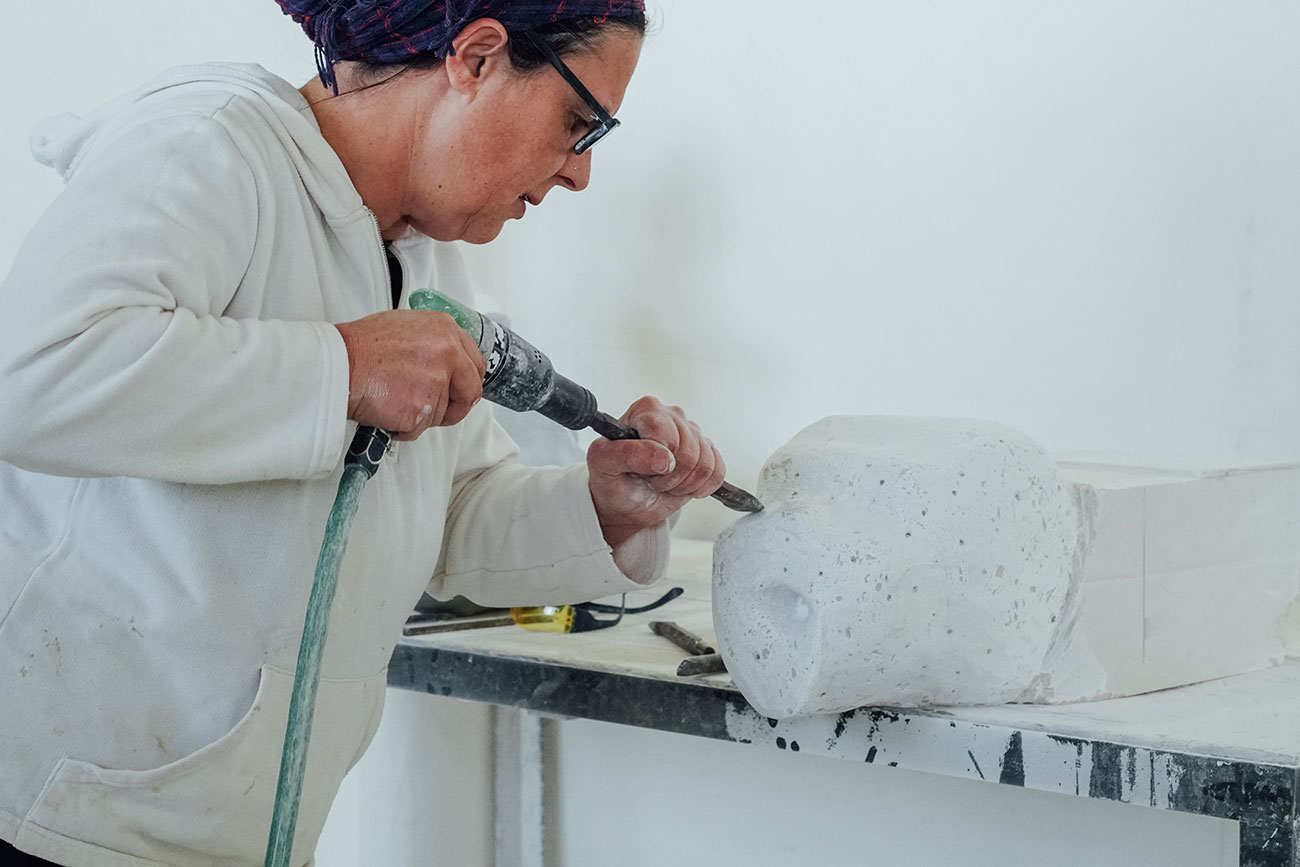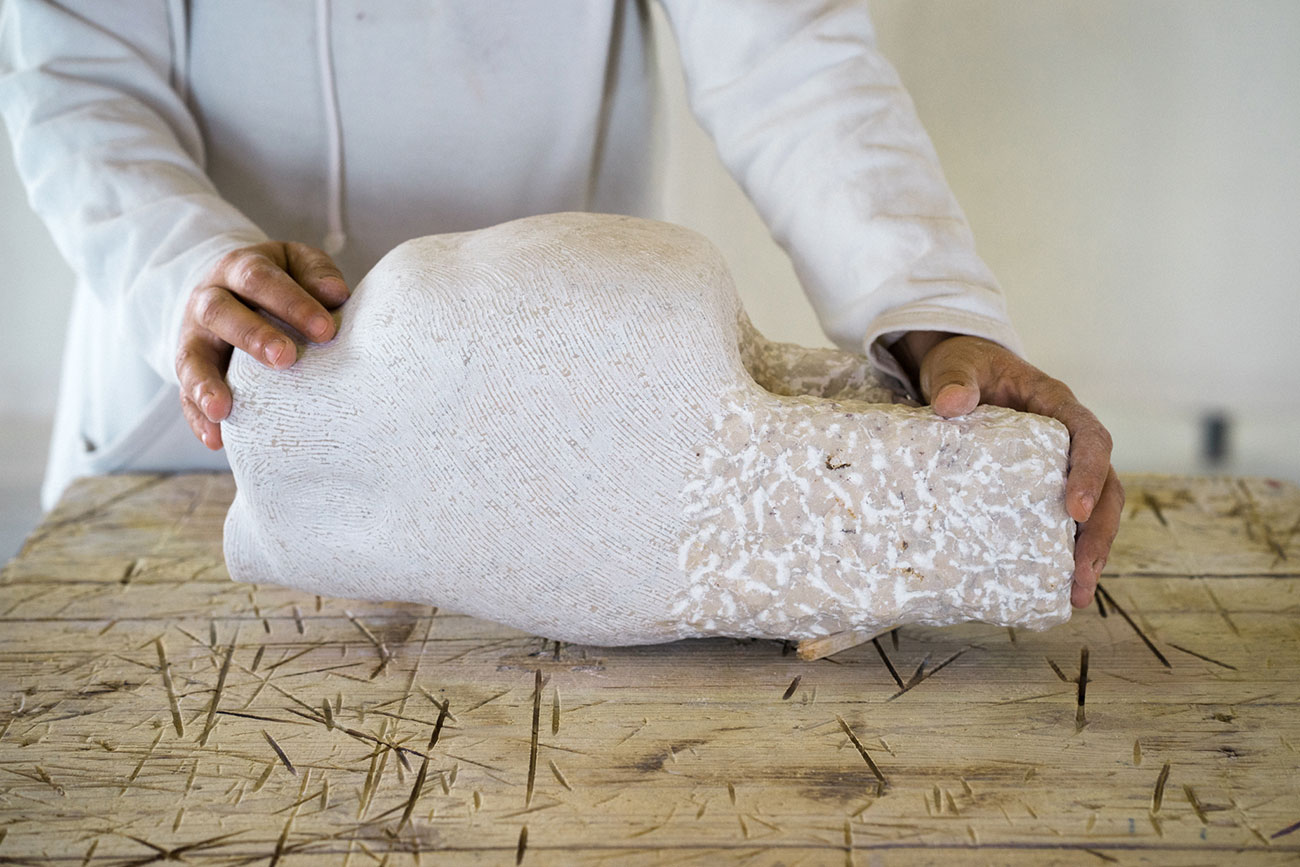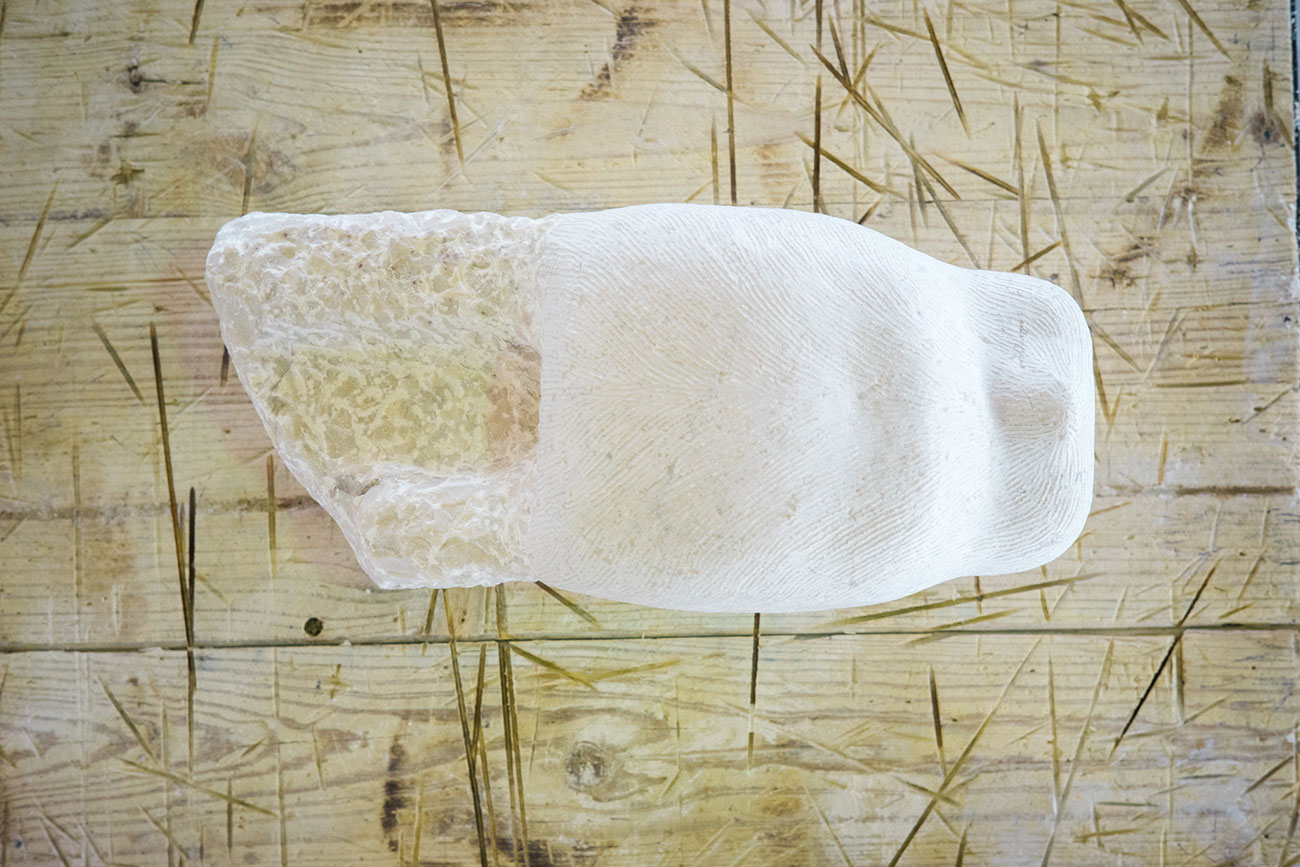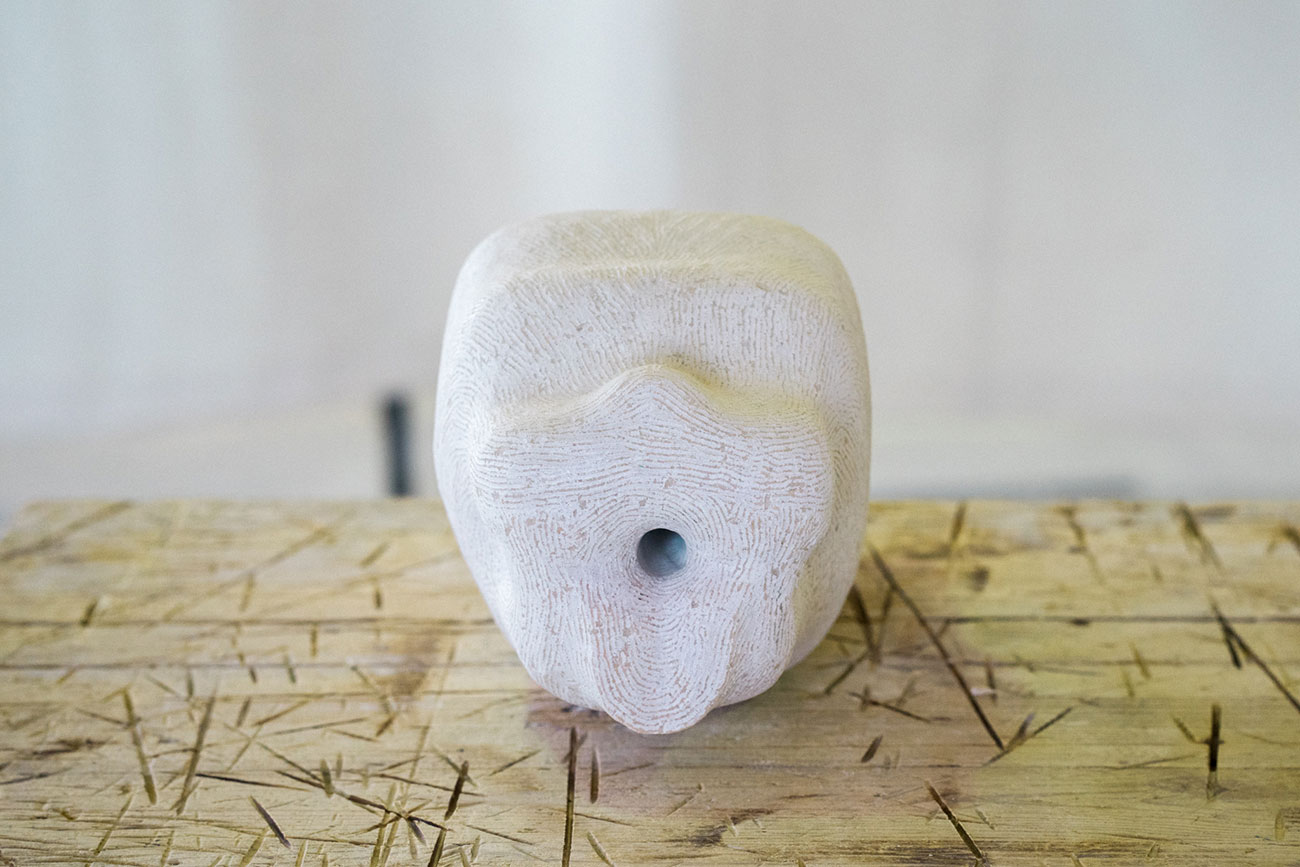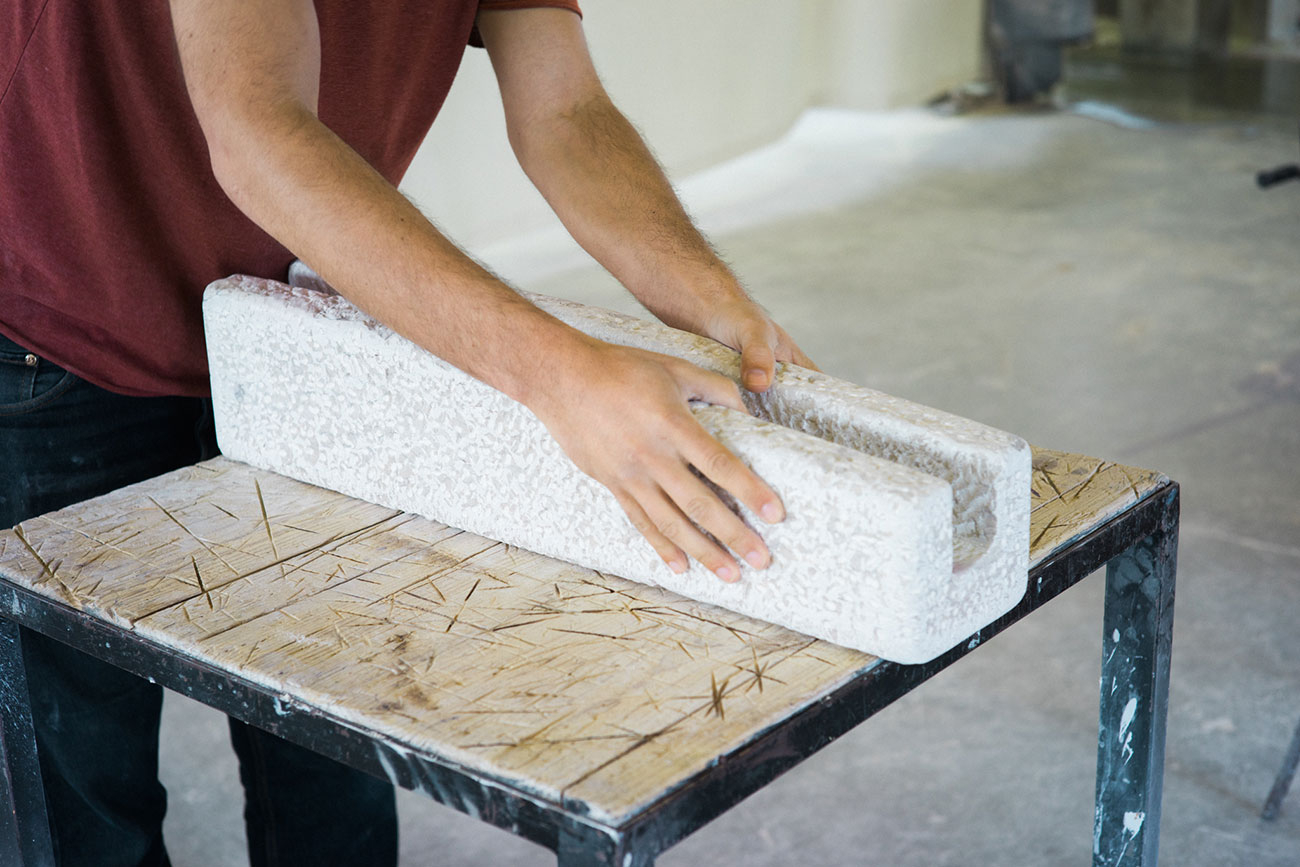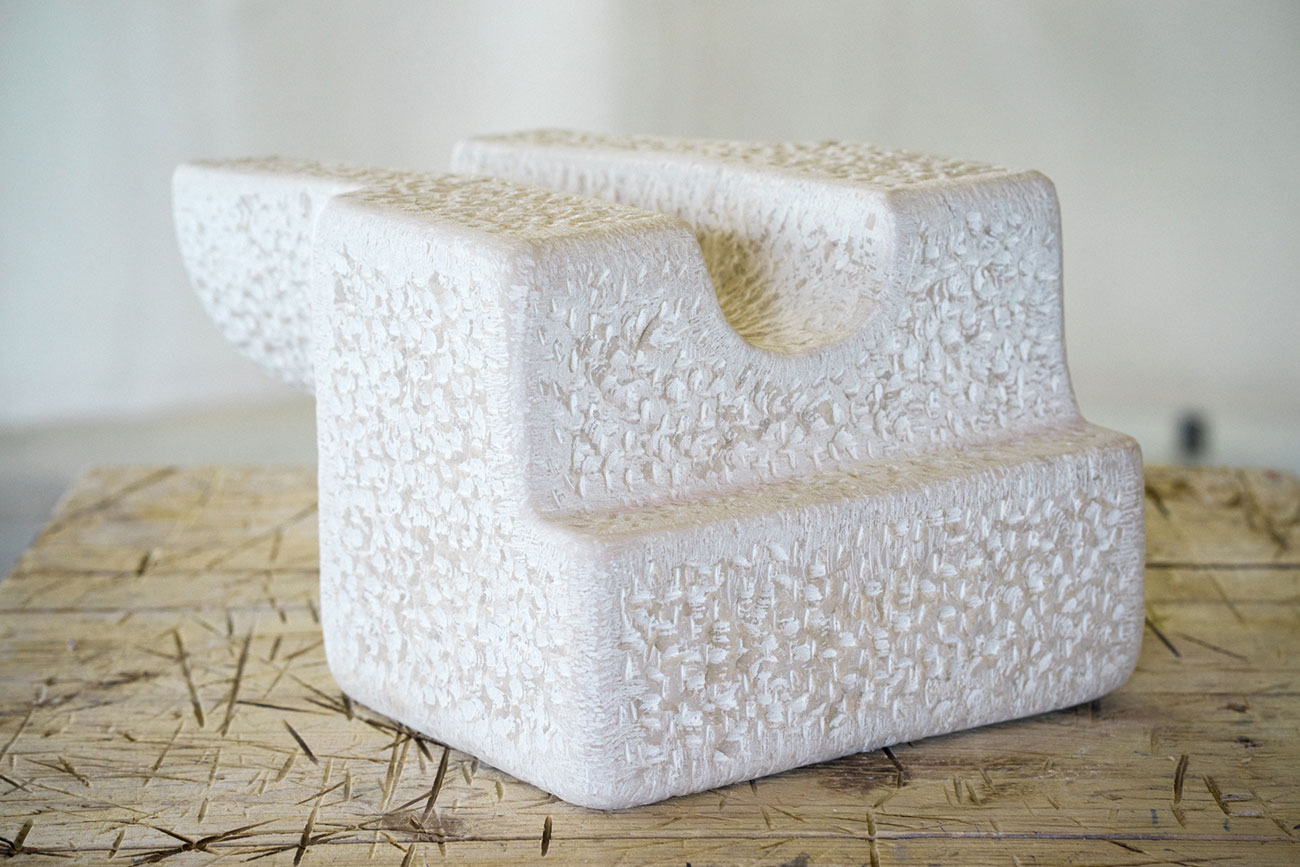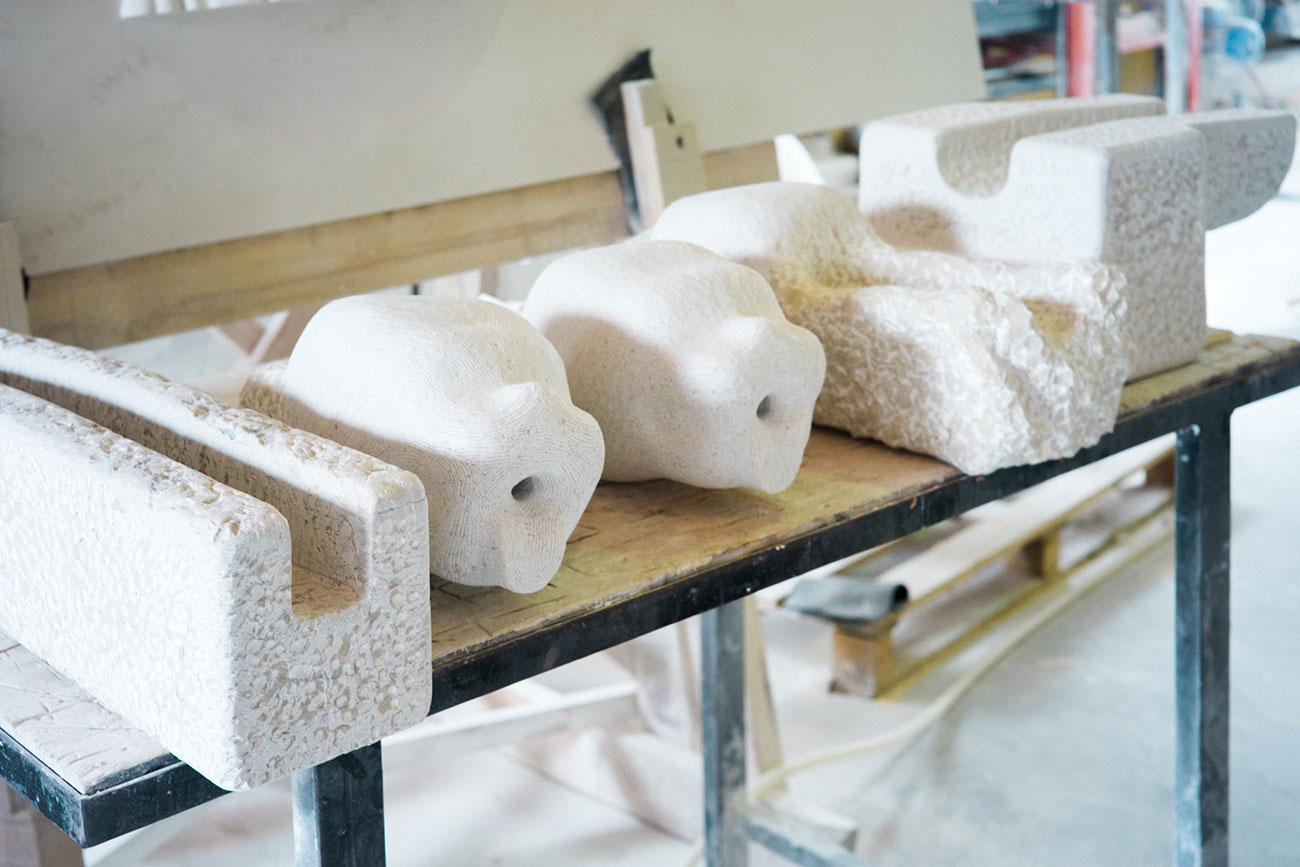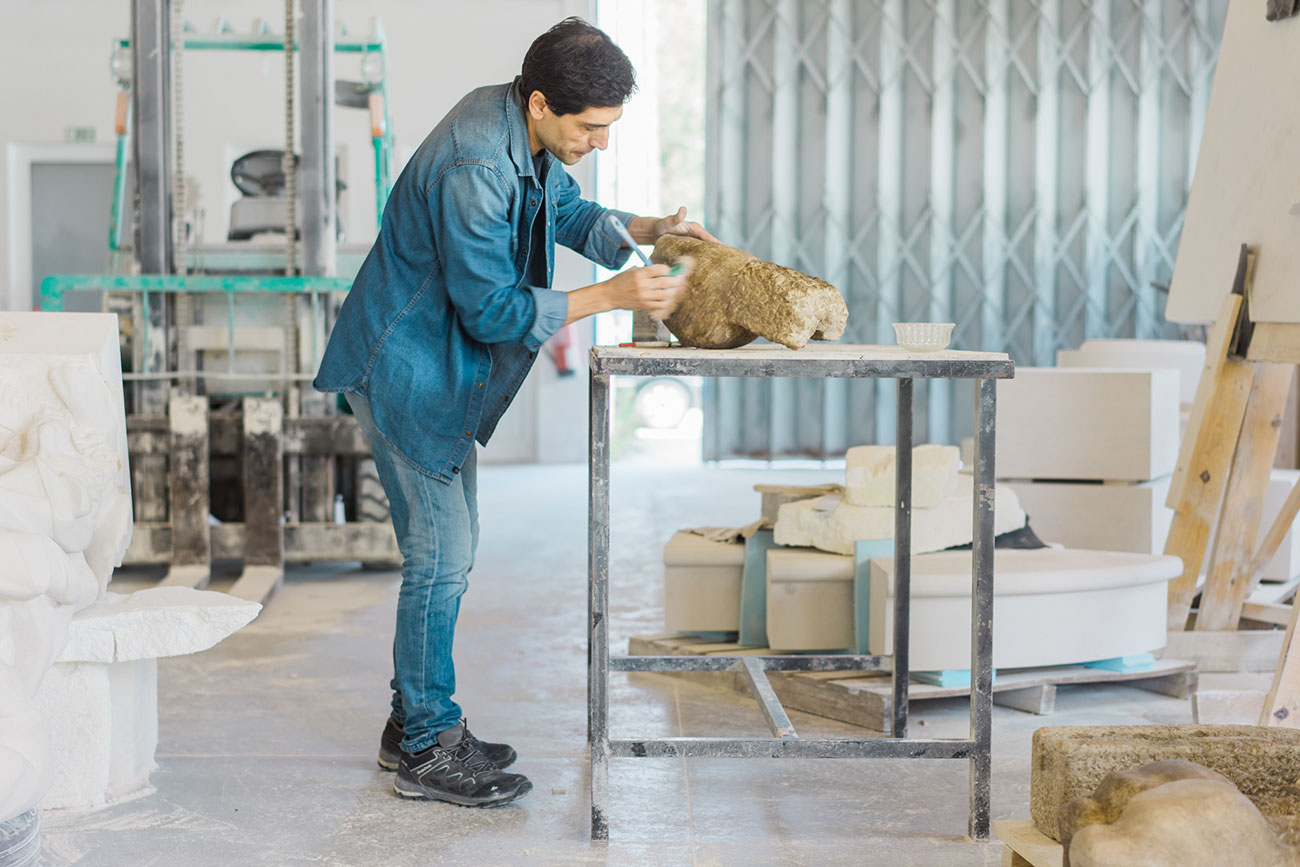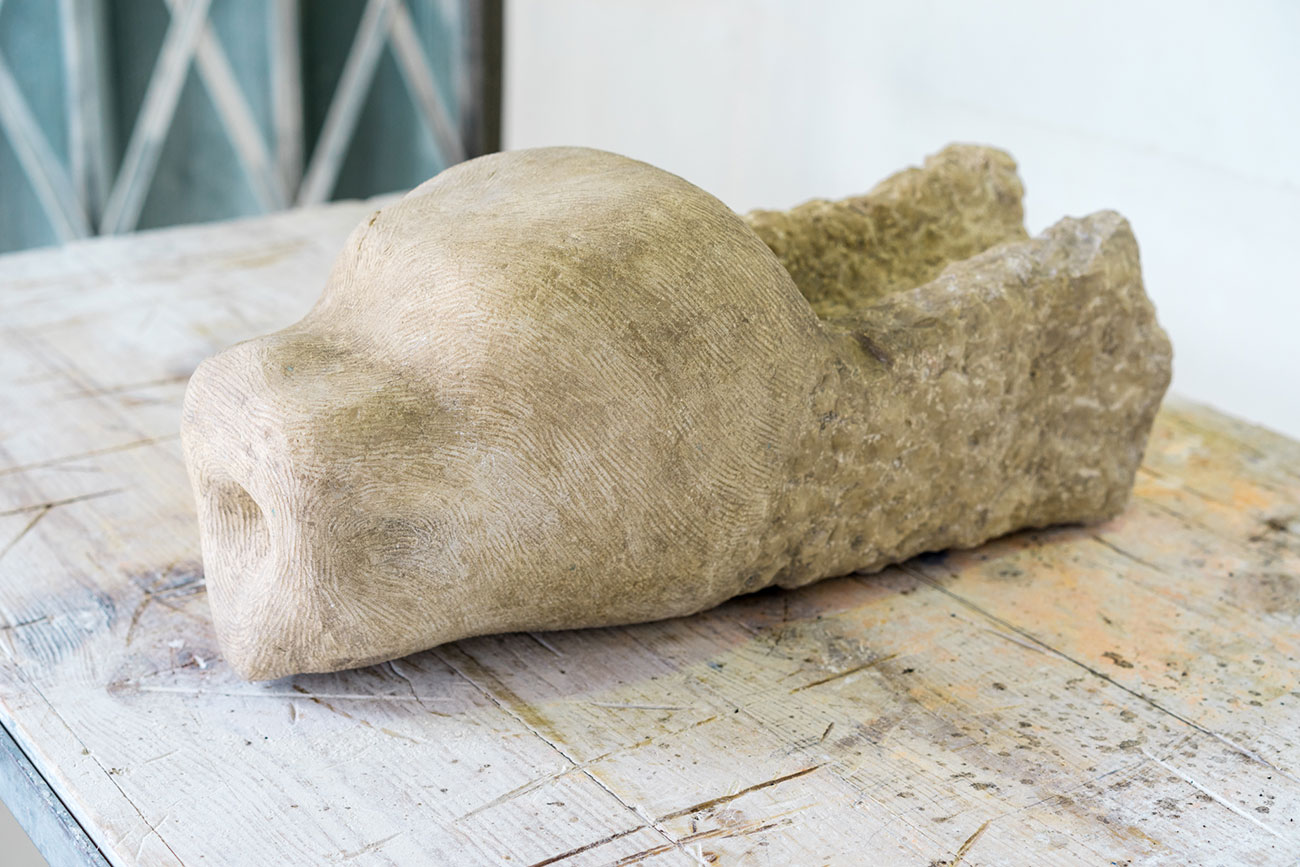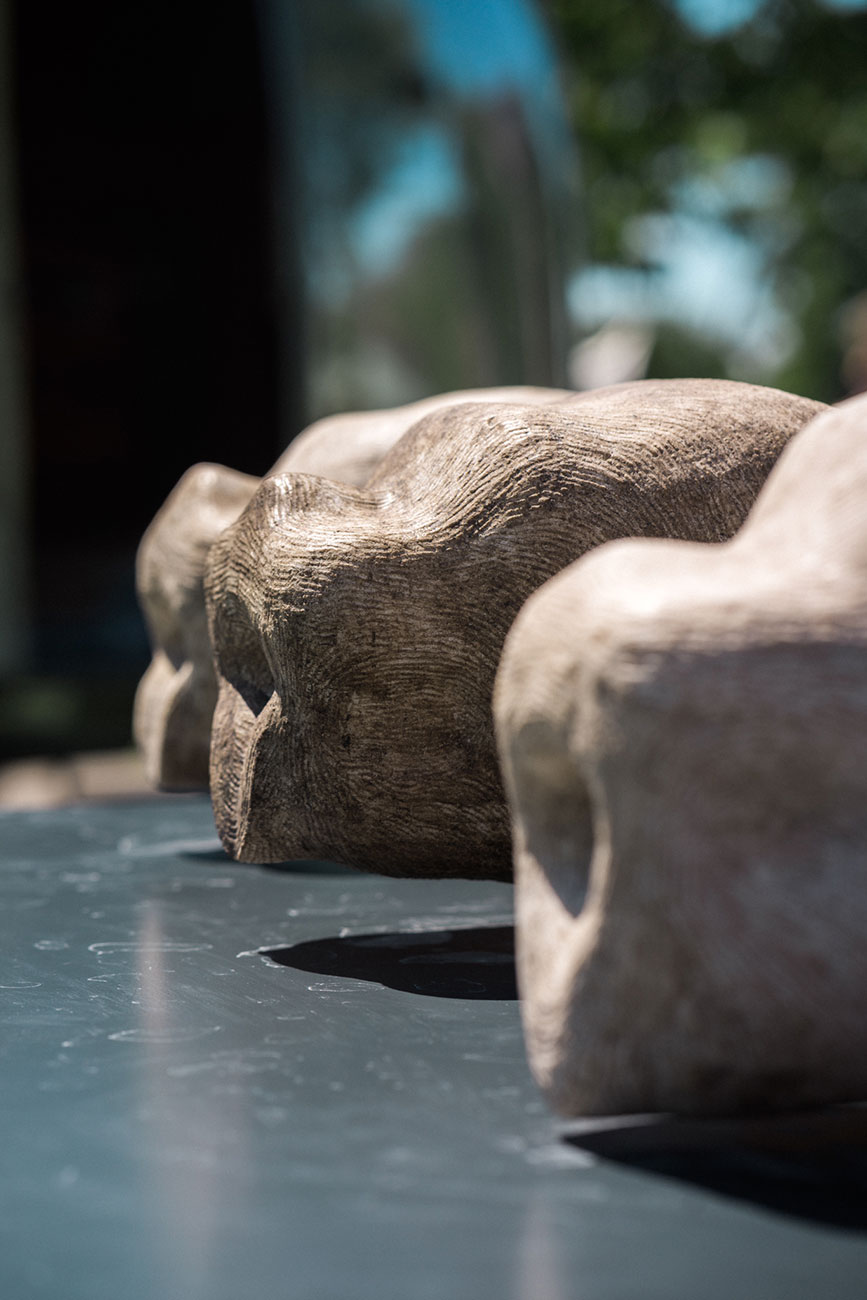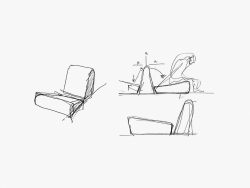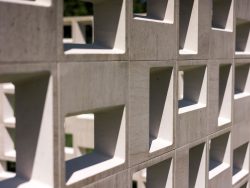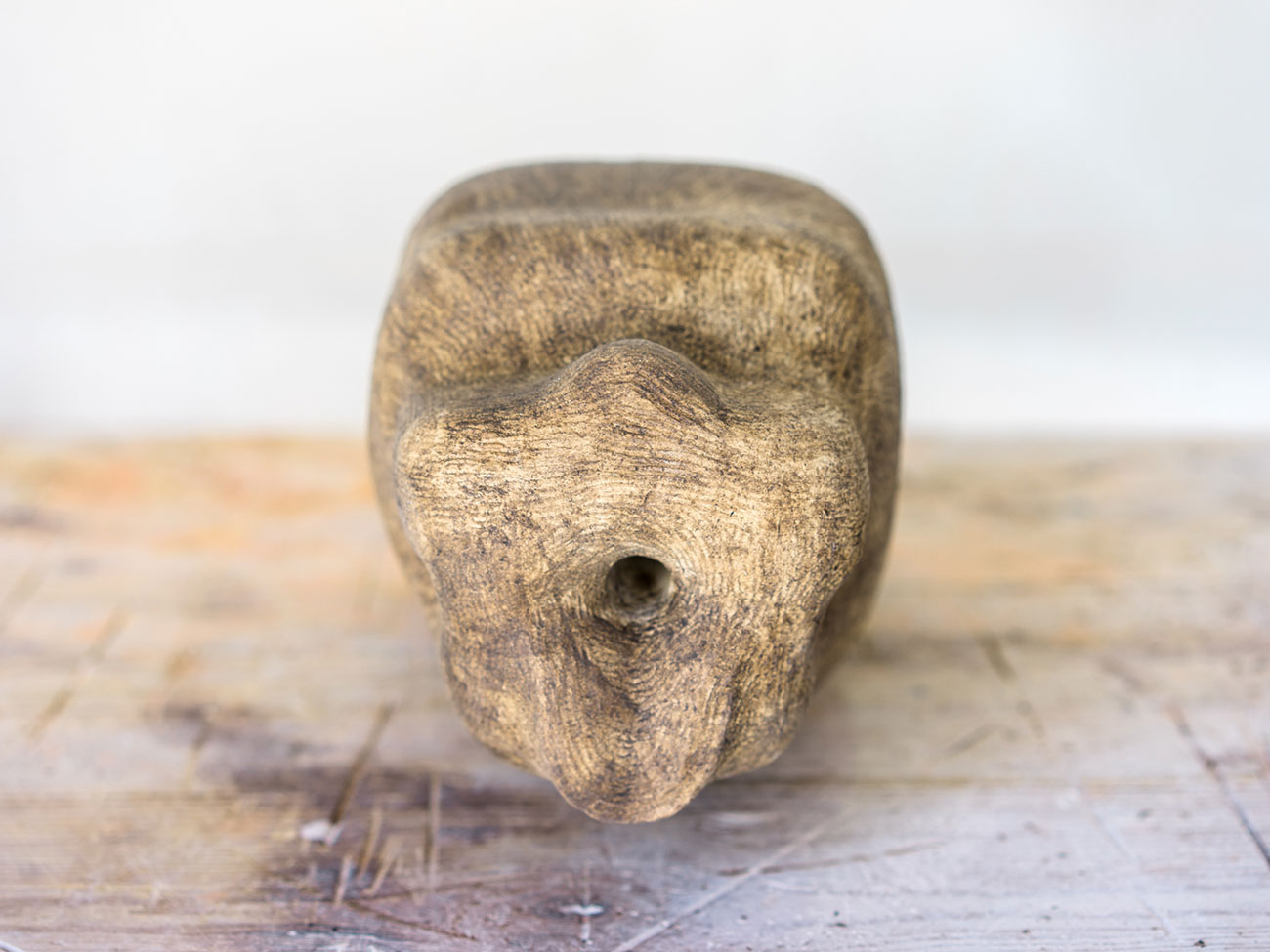
Water
Bijoy Jain
Gargoyles are symbols that channel the water flow, instead of resisting it, facilitating a transition and pushing water outward to the ground, where it continues its path back to its source. Like all materials, organic and not, these six pieces breathe, absorb and release other materials in order to last beyond their own temporality. They are a statement of this fundamental truth of nature, metaphorically reflecting on the interaction between being and time.
Water, by Bijoy Jain
Water n.
A colourless, transparent, odourless, liquid Which forms the seas, lakes, rivers, and rain and is the basis of the fluids of living organisms.
Civilisation
Civilisation is built on an aqueous footing, a world that is in a constant flux, a culture continually in an ebb and flow. Air, light and water is our essential construct.
Man in Nature – Nature in Man is indivisible For centuries civilisations have acknowledged water as a unique element and one of the quintessential principles, fundamental to both nourishment and survival of all living beings.
Subjected to Earth’s gravitational pull, water takes new forms as it falls downwards and ultimately goes in search of its terminus on solid volumes, on the ground or at sea level. There, due to its molecular disposition, an alliance of drops emerges and converges into a fluid, which benefitting from its own capillarity moves to take a course of transformation.
Gargoyle n.
from the Greek gargarizein meaning to “wash the throat.” A gargoyle is a waterspout, usually carved to resemble an odd or monstrous creature, that protrudes from a structure’s wall or roofline. By definition, a real gargoyle has a function to move rainwater away from a building.
